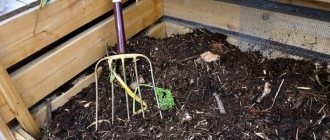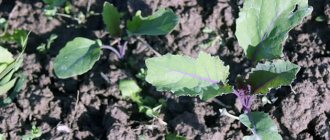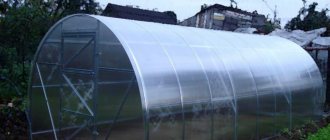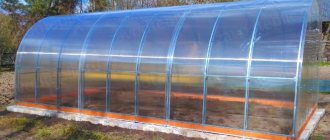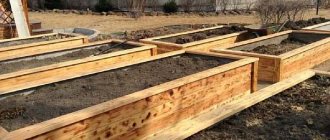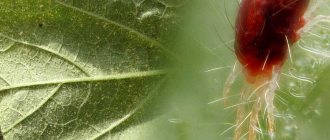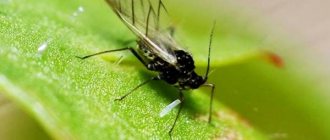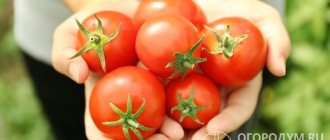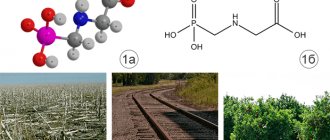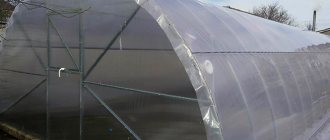Baikal EM1
Perhaps the most popular microbiological preparation, which is used not only as an accelerator for compost maturation, but also as a “live” fertilizer for vegetables, fruits and ornamental crops. Baikal increases soil fertility and has a beneficial effect on the growth and development of plants, helping them absorb nutrients.
The composition contains various types of beneficial soil microorganisms: nitrogen-fixing and lactic acid bacteria, yeast, fungi, photosynthetic bacteria.
How to use Baikal EM1
The consumption of liquid concentrate for processing compost is 100 ml per 10 liters of water. For 1 sq.m of organic mass, 5 liters of working solution will be required. Compost treated with the drug matures in 2-3 months.
The Shining 3
Microbiological fertilizer contains cellulose-processing bacteria and other beneficial microorganisms, which during their life processes process organic waste into valuable vermicompost. Can be used at any time of the year.
How to use Radiance 3
To process 1 square meter of compost, take half a glass (100-125 ml) of the dry preparation Siyanie 3. A layer of organic matter 20-25 cm thick is sprinkled with powder, then 5-10 liters of water are spilled and sprinkled with soil from the site (layer height no more than 2 cm) . After this, the compostable mass is compacted and covered with dark polyethylene. In warm or hot weather, the compost will be ready in 3 weeks; in the cool season, the ripening process will take 4-5 weeks.
How to mix ingredients correctly
If you overdo it with nitrogen substances, they will begin to rot and emit an unbearable odor. If there is an excess of carbon ingredients, the compost will be dry, which increases the decomposition time. Therefore, it is necessary to correctly calculate the number of components and use compost rotting accelerators.
To make it easy to count, you need to remember the rule 1:3. 1 part nitrogen to 2 parts carbon. In addition, there is a rule for laying ingredients: you cannot compact the substances, as this disrupts air circulation and contributes to the death of bacteria, after which the mixture usually rots and becomes unsuitable for further use.
How to increase the nutritional value of compost
Mineral fertilizers are added to the finished fertilizer - superphosphate, potassium sulfate, urea. This increases the nutritional value for plants. Wood ash, bone and fish meal, and phosphorites are suitable. Considering that compost is not so much food for plants as support for the soil, mineral supplements will not be superfluous.
Ekomik Dachny
This biological product in liquid form contains lactobacilli, actinomycetes, enzymes and biologically active substances that can break down organic matter, including fiber and cellulose. Active microorganisms convert plant residues into humus and promote its mineralization.
Lactobacilli remain viable at various acidity and humidity levels, which ensures high efficiency. During their metabolism, actinomycetes produce antibiotic substances that suppress the growth and reproduction of pathogenic flora - this ensures the elimination of unpleasant odors and the possibility of using the product not only for composting waste, but also for servicing country toilets.
How to use Ekomik Dachny
To speed up the preparation of compost, 100 ml of the drug is diluted in 10 liters of water. This solution (at the rate of 5 liters per 1 sq.m.) is poured over a layer of organic matter 20 cm thick and covered with film. After this treatment, the compost matures in 2-4 months. The drug can also be sold in the form of a dry substance - in this case, the contents of the package are dissolved in a bucket of warm water.
Why does my compost pile smell bad?
Ammonia swing. This smell may indicate an overabundance of nitrogen-rich materials. Also, the pungent odor of ammonia can come from over-watering, so reduce the amount of water you use on your compost.
Smell from leftover food. If you add food you leave behind to your compost, over time it can smell very bad. To eliminate this inconvenience, chop leftover food as little as possible to quickly burn it out.
Embiko
Compost prepared using the Embiko biological product is characterized by a high content of useful microbiological mass. An organic destructor reduces nitrogen loss during the ripening process and converts it into compounds that are easily absorbed by plants. In addition, the drug suppresses the activity of pathogenic and opportunistic bacteria, and therefore is able to eliminate the smell of the compost heap.
How to use Embiko
Embiko is sold in the form of a ready-to-use solution in 5 liter and 10 liter bottles. To prepare 1 cubic meter of compost, 100 ml of liquid is enough. Ripening of organic mass occurs within 6-8 weeks, and in some cases (at favorable temperature and humidity) it is reduced to 3-4 weeks.
Tamir
This drug is a complex of 86 types of beneficial soil microorganisms that can process and ferment organic waste. It is used as a biodestructor in more than 80 countries around the world and is included in the technological cycle of livestock complexes and farms - to eliminate unpleasant odors, dispose of waste and obtain high-quality fertilizer. It can also be used for tillage after harvesting, because quickly decomposes plant residues and prevents the proliferation of weeds.
How to use Tamir
To speed up composting, the liquid is diluted with warm water in a concentration of 1:100, and the resulting solution is used to moisten the compost heap at the rate of 5-7 liters per 1 sq.m of organic mass. Mature compost can be obtained 2-3 weeks after treatment with Tamir.
What is compost used for?
Making compost is the cheapest and most effective way to improve soil structure. Organic remains that have rotted in a compost heap contain a huge amount of useful microelements that feed plants during the growing season.
Compost is plant waste collected in one place and decomposed into small particles. The process of turning a compost heap into fertilizer naturally takes years. Therefore, summer residents choose a convenient way to speed up the maturation of compost.
To obtain high-quality compost that contains useful substances, you cannot throw everything in a heap. All organic waste subject to decomposition is divided into two categories:
- Nitrogenous. They consist of manure, bird droppings, vegetable and fruit waste.
- Carbonaceous. They are obtained from sawdust, grass, leaves, and straw.
The following should not be allowed into the compost heap:
- inorganic waste;
- plants with obvious diseases;
- weeds with seeds;
- citrus peel.
You can add scraps of natural fabrics, paper and cardboard products, feathers, but shred them first. Only in this form will they begin to decompose.
There is no one way to compost natural materials. Each summer resident decides for himself what materials to send for recycling.
What is compost used for: YouTube/Nick's Earth. Experts in the garden
The fastest compost is obtained from homogeneous components:
- In the summer, mown fresh or dried grass and weeds after weeding are stored in a fenced-off area.
- An excellent bed for compost is made from straw.
- In autumn, fallen leaves are collected in one pile.
- In winter, food and household waste is stored, and in the spring, leftover leaves and sawdust are added there after pruning trees.
- If there are livestock on the farm, a manure pile is collected over several months, to which straw is added in layers.
Summer residents are faced with the problem of compost heap compaction. Rapid composting takes longer if no air gets in. Therefore, the waste is periodically turned over, enriching it with oxygen.
When finished, compost looks like a dark and damp mass that crumbles in your hands. The ideal fertilizer smells like forest humus. High-quality compost is produced faster by using accelerated maturation technologies.
EM-Bokashi
The drug in powder form contains fermented wheat bran, seaweed and other beneficial microorganisms (fermentative fungi, yeast, lactic acid bacteria). The complex effect of these components accelerates the process of breakdown of organic waste, and in addition, eliminates the unpleasant putrefactive odor.
How to use Bokashi
Bokashi powder consumption is 100-200 ml per 1 square meter of surface, or 100 g of substance per 10 kg of organic mass. The powder is evenly distributed over the surface of the compost heap, spilled with water and a layer of garden soil 5 cm thick is poured on top.
Doctor Robik 209
The preparation in powder form contains a complex of microorganisms that can work even in conditions where the technology for proper preparation of compost is not followed. Excess or lack of moisture, temperature fluctuations, or lack of oxygen will not prevent beneficial bacteria from doing their job.
How to use Doctor Robik 209
Before using the product, the compost heap must be watered, then the contents of the bag (60 g) should be scattered over the surface, sprinkled with soil from the garden and mixed. One sachet of product is enough to process 1-1.5 square meters of compost; it is recommended to repeat the procedure once a month.
Gumi-Omi Compostin
This liquid preparation, in addition to beneficial bacteria, contains humic components, nitrogen fertilizers and fermented organic matter (usually chicken droppings). All these additives help create the nutrient medium necessary for the life of microorganisms.
How to use Gumi-Omi Compostin
To obtain a working solution, 50 ml of the drug is dissolved in a bucket of water (10 l). This volume is enough to process 50 kg of compostable mass.
Under a covering layer of soil, compost ripening lasts 1.5-2 months, and if you use a dark film, the process will go even faster, and you will receive ready-made compost in a month.
Why is the compost pile so difficult to stir?
Regular stirring of the heap promotes the rapid maturation of all compost, the supply of the required amount of oxygen and the installation of the necessary microclimate for fermentation.
But sometimes it’s almost impossible to mix a bunch. This happens when the “green” layer turns out to be very thick, and sometimes they make the mistake of laying out only one green layer, forgetting about the “gray”. Such a pile simply sticks together like butter, which is simply impossible to stir.
Don’t be discouraged if for some reason you can’t mix the pile, nature will still do its job, it just takes a little longer than you expected. But next time make the composition different, replace the components, try experimenting.
Oxyzin
The biological product Oxyzin is produced by fermenting sugar beet molasses. The microorganisms included in its composition are capable of processing plant residues into humus, as well as breaking down weed seeds, eliminating the possibility of their germination.
How to use Oxyzin
The solution is available in 20 ml bottles with a dropper. Consumption per 100 kg of organic mass is calculated as follows: 40 drops per 1-1.5 liters of water. It is recommended to water the compost heap using a small watering can or spray it in layers.
Compost matures under the influence of this drug in 3-5 weeks. For greater efficiency, it is recommended to shred the waste before storing.
Traditional methods
Experienced gardeners do not really trust modern store-bought preparations and prefer to speed up ripening using proven folk methods.
- Bran. This home remedy has been made independently for a very long time and is based on wheat or rye bran. In essence, this is the same Bokashi product, only homemade. One tablespoon of sugar, jam or honey is added to 1 liter of water, then the bran is soaked in this solution for germination. The bran should swell to such a state that it can be formed into a lump. Then the excess water is drained, and the grains are poured into an impenetrable bag and tied tightly after releasing the air. The average ripening period for seeds is approximately 10 days, after which they need to be dried in air and can be used. The finished composition should have a sweetish or fruity smell.
- Herbal tincture. This is the same bait known to all gardeners, in which chicken droppings and grass are soaked in water and infused for 7-10 days. It turned out that this fertilizing effectively accelerates the maturation of compost.
- Yeast infusion. Yeast itself causes the process of putrefaction by releasing gases. To begin with, make a primary starter, fill a 3-liter bottle with warm water, add a teaspoon of yeast and about 50 grams of sugar. After the fermentation process has begun, the bottle is divided into three equal parts and poured into 3 buckets of 10 liters each, the rest of the space is filled with warm water for further fermentation.
Important! Adding yeast to your compost bin will significantly reduce the amount of calcium in the compost. In order to compensate for the decrease in calcium, yeast is poured along with an infusion of wood ash. 3 liter jars of ash are poured into 10 liters of water and left for 7-10 days, after which they are filtered and poured onto a pile of compost, then a bucket of yeast infusion is poured.
Compostello
This ripening accelerator, in addition to its main function, is able to eliminate and inhibit the growth of pathogenic microbes in the compost, thereby eliminating unpleasant odors. The microorganisms contained in the preparation are able to work at a temperature of 10°C and break down even weed seeds into useful biomass.
How to use Compostello
One sachet of the drug (60 g) is dissolved in 20 liters of water and infused for 30-45 minutes. The prepared solution must be used throughout the day. High-quality mature compost can be obtained in 6-8 weeks.
Biodisruptors
Biodisruptors are drugs prepared in industrial conditions, which are based on organic components with the presence of living bacteria and microorganisms. The main function of these organisms is to speed up the decomposition process. When they enter a compost pit, microbes find themselves in a favorable environment and begin to actively multiply and feed. The enzymes and gases they release accelerate the process of decay.
These drugs are considered new to the market and can be used to recycle the contents of dry closets, treat wastewater, and even disinfect drinking water.
Proven methods for protecting crops from cruciferous flea beetle
Biodisruptors for compost pits contain special types of bacteria, which, in addition to accelerating decomposition, also prevent other harmful bacteria from multiplying. These bacteria accelerate the process of compost maturation and, when released into the soil, act as protection for plants, continuing to destroy pathogenic microflora of the earth, which increases yields by an average of 20%.
Method of use of EM preparations
It is recommended to dilute all destructor drugs in warm, non-chlorinated water (optimal temperature from 25 to 32°C) - you can take spring or rain water. If there is no access to these sources, then tap water should be allowed to stand for 48 hours.
Typically, each 15-20 cm thick layer of compost is sprinkled with a ripening accelerator. If the preparation is in powder form, then it is scattered over the surface of the compost heap and watered with water. Then sprinkle with earth or mulch (5 cm layer) and cover with agrotextile on top. This is important to achieve optimal temperature and humidity levels at which beneficial bacteria can work effectively.
An exception to the general rule is the drug Baikal EM - it can also work with a single use. In September, the destructor is poured into a hole in the middle of the finished compost heap, which is then insulated for the winter. In this case, the water for diluting the drug is taken almost hot - at a temperature of 35-40°C.
A huge advantage of biological products is that they are completely non-toxic and safe for people, animals, and the ecosystem as a whole. This is why products based on live bacteria are gaining popularity among summer residents and gardeners.
Accelerating the ripening of compost is just one of the useful functions, and pleasant “side effects” of the work of effective microorganisms will be increased plant immunity, improved quality of fruits in garden and vegetable crops, and increased productivity.
